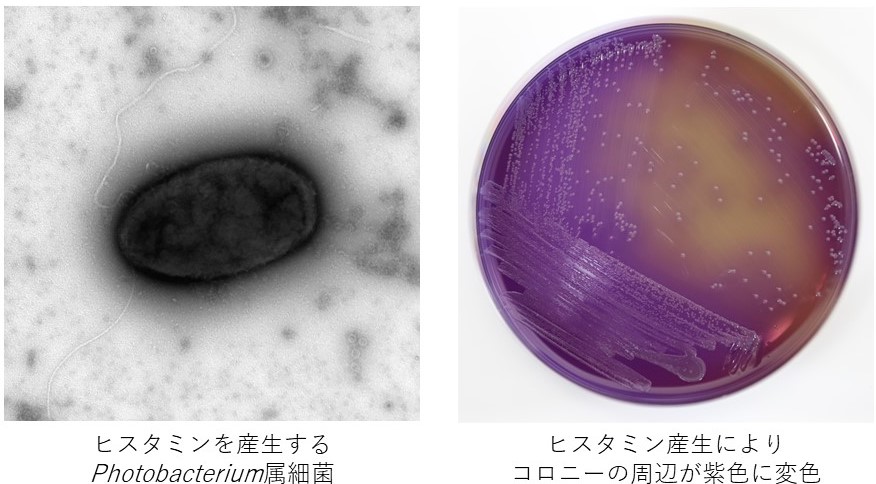The main histamine-producing bacteria involved in histamine food poisoning of fish meat include several species of bacteria, such as Morganella morganii, M. psychrotolerans, Photobacterium phosphoreum, and P. damselae. In particular, M. psychrotolerans and P. phosphoreum are important histamine-producing bacteria because they can grow and produce histamine even at low temperatures such as 4°C. We used the MPN-PCR method, which is a combination of the most probable number (MPN) method and polymerase chain reaction (PCR), to study M. psychrotolerans, which contaminates marine products. As a result, it was confirmed that M. psychrotolerans contaminates marine products distributed in Japan, and it was also found that M. psychrotolerans isolated from these products produces high concentrations of histamine at 4°C (Kato et al., 2017). We also found that the expression of the histidine decarboxylase gene of M. psychrotolerans increases under acidic conditions, and histidine decarboxylase extracted from the bacterial cell produces histamine under various pH and temperature conditions (Wang
et al., 2020a). These results reaffirm the importance of hygienic handling of marine products, including low temperature control, to prevent histamine food poisoning.
(Left) TEM observation of histamine-producing bacterium (Photobacterium sp.)
(Right) Histamine production in the culture medium (Purple discoloration around the colony due to histamine production)
